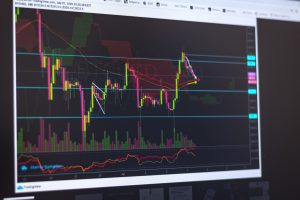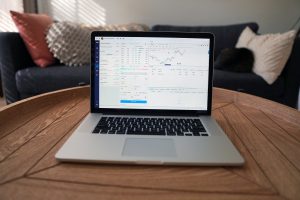Everyone working on the forex immediately faces a market where fundamentals (or when a currency is over or undervalued compared to a theoretical fair value based on certain parameters of economic nature, i.e. the most famous is the so-called principle of purchasing power parity PPP) are not really so important at least not directly.
Unfortunately, however, the trader hardly operates with long-term time horizons, as the week is already considered as an excessive period of time to make speculation. The representative graphs of the most commonly used prices by forex traders are therefore those with daily scans (candles or bars), but also the so-called intraday charts (for example 120, 60, 30, 5 minutes) are quite spread among those who actually operate in very short time spans.
This kind of trading requires a lot of in-depth technical analysis preparation. Knowing how to read and interpret a graph, but also understanding the periodic reports of the market addressed to the customers that brokers regularly publish, becomes a key element for those who want to succeed in forex trading.
Each broker obviously customizes its own reports in terms of both frequency and subject to analysis. There are analysts who prefer to focus on technical analysis of the major crosses, while others expand their analysis to exotic crosses. The technical analysis itself can range from the so-called classical one based on supports, resistances, trend lines, etc… to the more refined based on cycles or on intermarket analysis.
Very often, the graphical analysis are intersected with some market movers of the day. The volatility factor is well known on the forex market and it is generated from the data output on the U.S. unemployment; a focused analysis on precisely how a certain currency pair behaved in the past on the output of that specific data can help the trader to orientate himself on the choices of the trading day.
If the interpretation of a graph becomes crucial in the forex trading market, the analysis of the market sentiment is a very interesting accessory. Several brokers are in fact able to provide their customers with the long and short placement of each currency pair. Even if it is limited to a broker, this information provides a significant sample of what traders are thinking at that moment on the market. Clearly, positive or negative excesses of sentiment can always be exploited by traders in a contrarian viewpoint.
All this mixture of information must be managed and punctually proposed by the broker, but it also has to be used to create training modules that can help the trader to develop and enhance his skills. For example, the webinars are free training modules covering a wide variety of materials, technical and fundamental analysis, money management up to the use of the trading platform.






More Stories
What are cryptocurrency exchange-traded funds?
How to implement contrarian strategies?
Demo Account and The Choice of a Forex Broker